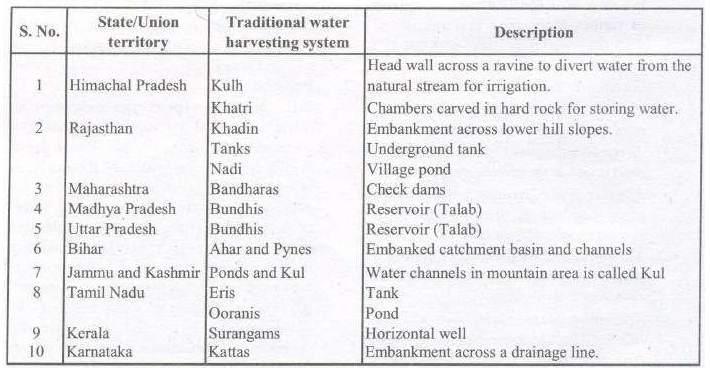1. Anything in the environment that can be used is called a natural resource.
Controlling system for the use of natural resources in such a way as to avoid their wastage and to use them most effectively is called management of natural resources.
The Ganga Action Plan (GAP) was formulated to reduce the pollution load of river Ganga by more than 75%. The water quality has been tested from time to time by checking coliform (group of harmless bacteria in the human intestine) number/ 100 ml.
2. Forest and wildlife:
· Forests are vast areas, located far away from human inhabitation where wild plants of various kinds grow and animals of different varieties live without the intervention of humans.
· Forests are “biodiversity hot spots”.
· A person with an interest or concern in something is called a stakeholder.
(A) To consider the conservation of forests, we need to look at the stakeholders who are :-
(i) The people who live in or around forests, are dependent on forest products for various aspects of their life.
(ii) The Forest Department of the Government which owns the land and controls the resources from forests.
(iii) The industrialists — from those who use `tendu’ leaves to make bidis to the ones with paper mills — who use various forest produce.
(iv) The wildlife and nature enthusiasts who want to conserve nature in its pristine form.
· A major program called silviculture has been started to replenish the forests by growing more trees and plants.
Steps for conservation of energy resources are :
(i) Save electricity, water, etc by not using useless.
(ii) Use energy-efficient electrical appliances to save electricity.
(iii) Use a pressure cooker for cooking food.
(iv) Use solar cookers.
(v) Encourage the use of biogas as domestic fuel.
(vi) Fuel-efficient motor vehicles should be designed to reduce the consumption of petrol and diesel.
3. Pollution
(A) When coal and petroleum-based fuels (like petrol and diesel) are burnt, the products of combustion are: Carbon dioxide, Water, Sulphur dioxide, and Nitrogen oxides, and if
combustion takes place in an insufficient supply of air (or oxygen), then some carbon monoxide is also produced. Out of all the products of combustion
of these fuels, only water is harmless and does not affect the environment. All other products are harmful and hence pollute the environment.
(B) The harnessing of water resources by building dams has social, economic
, and environmental implications. Alternatives to large dams exist. These are locale-specific and may be developed so as to give local people control over their local resources.
· The fossil fuels, coal, and petroleum, will ultimately be exhausted. Because of this and because their combustion pollutes our environment, we need to use these resources judiciously.
· The destruction of forests affects not just the availability of forest products but also the quality of soil and the sources of water.
· Large-scale killing of snakes disrupts the food chains in which snakes occur and creates an imbalance in nature.
· The various sources of water that are available to us are Rains, Rivers, Lakes, Ponds, Wells, Oceans, and Glaciers (Snow mountains). Rain is a very important source of water.
· The pollution of river water is caused by the dumping of untreated sewage and industrial wastes into it.
· The contamination of river water can be usually found from two factors :
(i) the presence of coliform bacteria in river water, and
(ii) measurement of pH of river water.
(a) Rainwater harvesting is an age-old practice in India. Water-harvesting techniques depend on the location where it is to be used.
Various advantages of water stored in the ground are:-
(i) The water stored in the ground does not evaporate.
(ii) The water stored in the ground spreads out to recharge wells and provides moisture for crops over a wide area.
(iii) The water stored in the ground does not promote the breeding of mosquitoes (unlike stagnant water collected in ponds or artificial lakes).
(iv) The water stored in the ground is protected from contamination by human and animal
(b) Traditional Water Harvesting Systems


GIPHY App Key not set. Please check settings